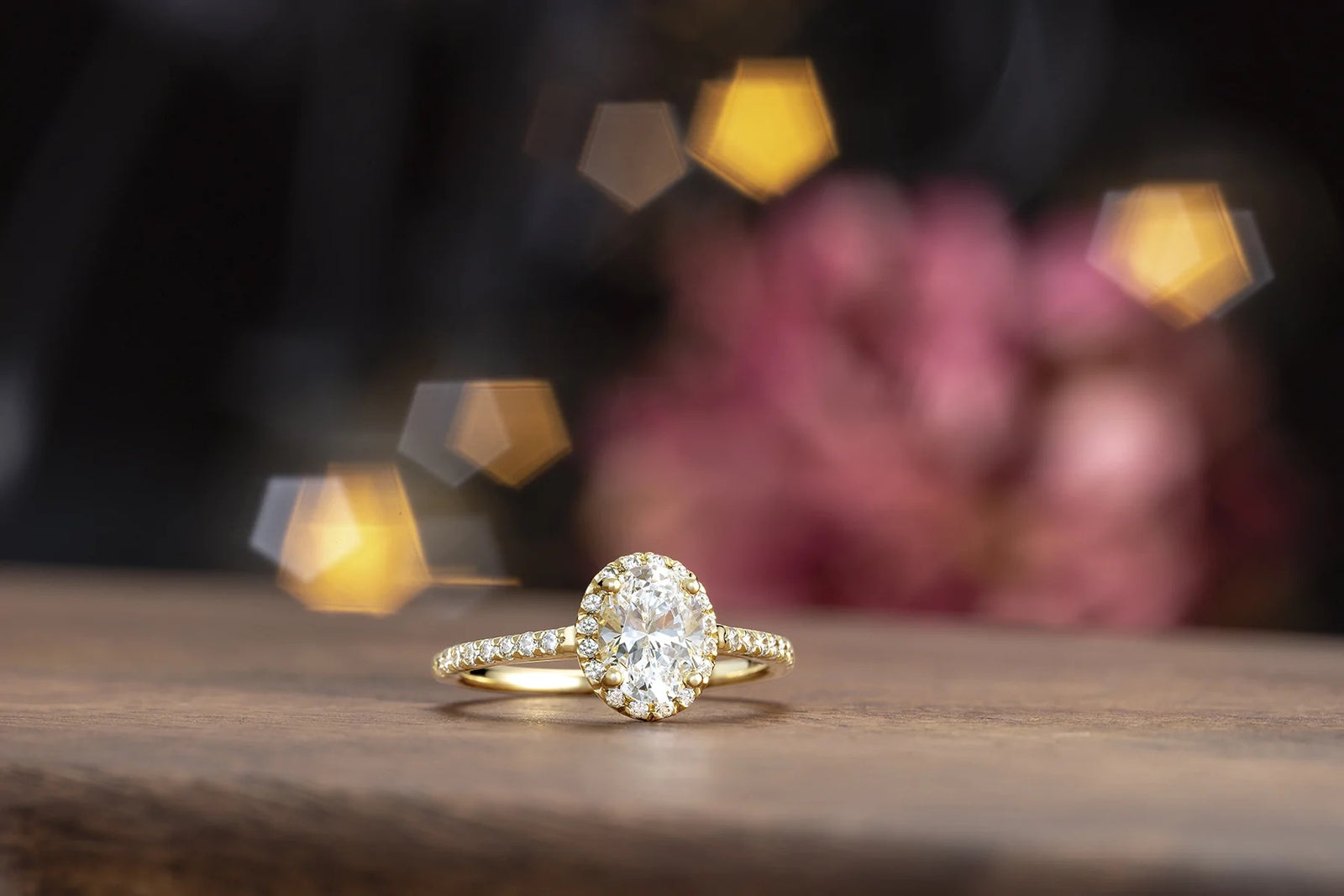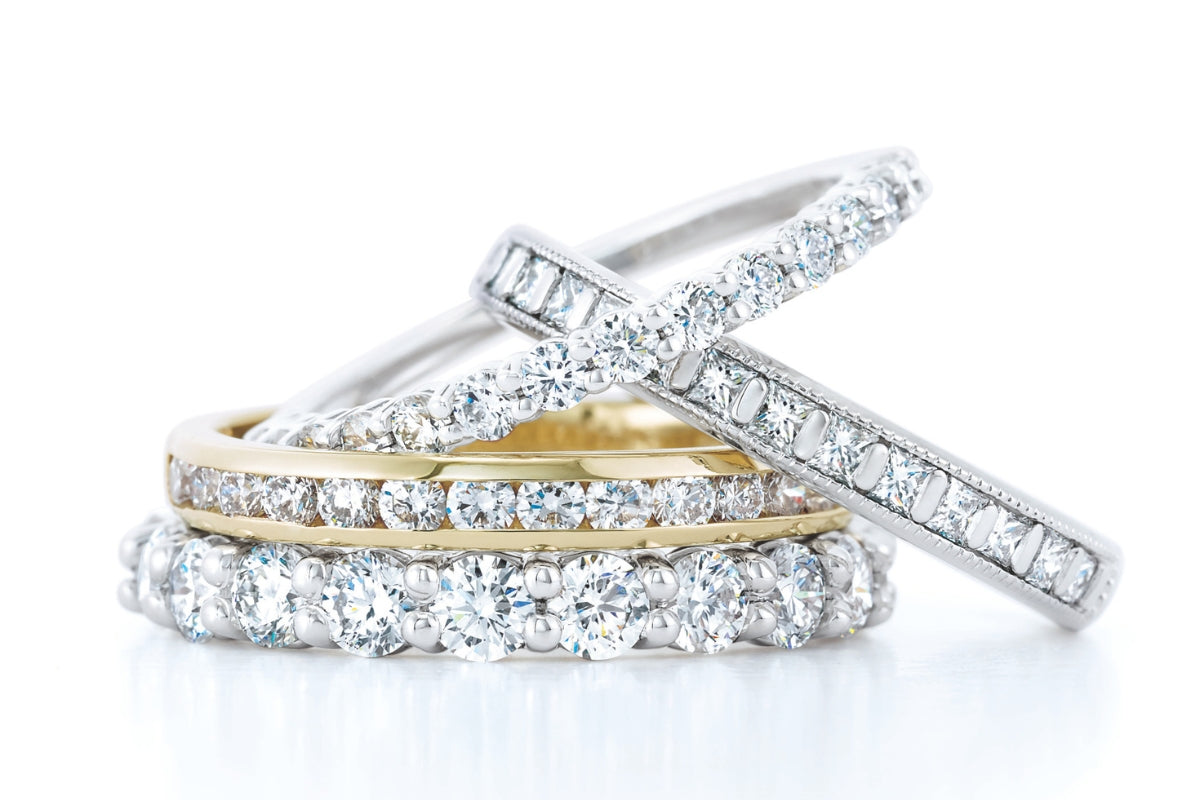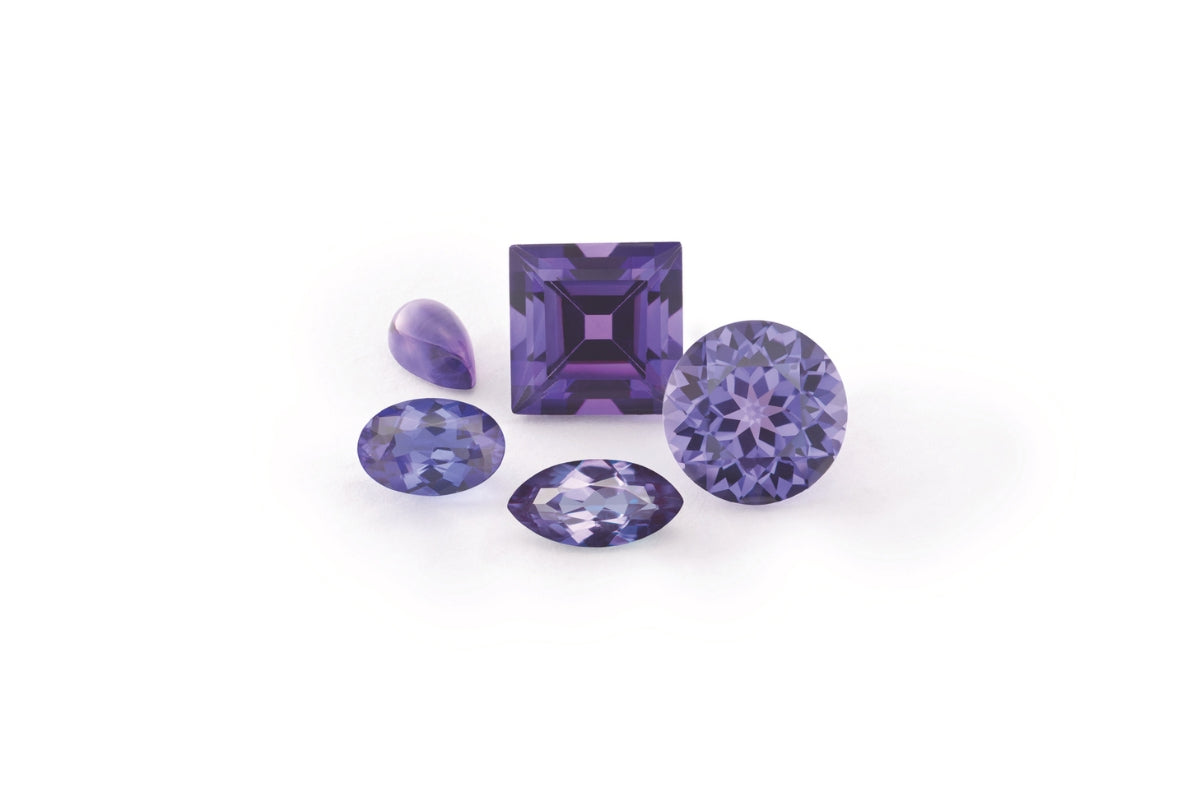As you research engagement ring designs, styles, and trends, you’ll inevitably uncover various subcategories of elements of the ring that are further designed or decorated. These intricate and sometimes subtle design details don’t necessarily make or break the ring design, but they do add a level of uniqueness and differentiation from the traditional engagement or wedding band ring look and feel.
One design element that many find attractive is called the french setting style. Technically, to qualify for “french setting” an engagement ring or wedding band needs to feature accent stones (typically round) on and down the side of the band in order to accomodate the french setting style. French settings place the small accent stones close together and make the prongs appear as either “fishtail” or “butterfly” due to the shape it creates. This is in contrast to the traditional “prong-set” style which has the standard shared prong, which has a rounded and sometimes “boxy” look and feel.
Customizing French Set Rings
Many find the french setting style to be an opportunity to add a bit of uniqueness to the band of the engagement ring or wedding band. The decorated nature of a french setting lends itself to a bit more romantic of a look as it’s not often you see this setting style. In fact, at a glance, you may miss subtle but desirable setting styles altogether. One of the primary reasons clients like to indulge in the french set look is due to it nicely blending into the “mounting” (ring). This look makes the precious metals surrounding the accent stones appear to “wrap” around the diamonds in a way that is less “defined” than the traditional “prong-set” stone setting method. This in turn gives the effect of the stones elegantly floating seamlessly down the side of the band.French setting styles end up making the colorless accent stones, normally diamonds, but could also be colored gemstones appear to “float” especially in precious metal colors that compliment the desired accent stone color. This is partially due to the precious metal surrounding the accent stone having been highly polished and brightly cut. For example, if we use platinum or white gold with colorless stones like diamonds, you can expect them to appear to “float” in place due to the little visible metal covering the stones. Conversely, if we use yellow gold or rose gold, then colorless accent stones tend to contrast the precious metal color and “pop” more visibly. In either case, the flashes of white light that appear off the polished and brightly cut portions of the prongs allow more “sparkle” that what those without french sets can expect.

To gain a further understanding and appreciation of this intricate design detail, knowing how this is done is equally important to how it ends up looking. It’s important to realize that any ring can utilize this setting style, though not retroactively. For example, if you fall in love with an engagement ring or wedding band design with standard prongs, we’d be able to modify the design on the backend to feature french set stones. Please note, it’s not possible to “repair” or modify an existing ring to feature french set stones as this wouldn’t be feasible. Though the french setting style is not something that is reserved for a specific type of engagement ring or wedding band design or style. In fact, any accented solitaire, halo, or three-stone engagement ring or wedding band style that features accent stones can be “upgraded” to the “french set” style. It makes sense that many of our clients who choose french set engagement rings end up incorporating that design into their wedding band, whether or not it’s an anniversary band or eternity band. Doing so allows the wedding band to have a bit more character and will match the engagement ring setting style perfectly.
French Set Prongs
French set prongs have the same general outline or “four-corner” coverage in terms of placement of the prongs when compared to their traditional prong set counterpart. A good example of where the corners are would be to think of a clock with twelve hour marks. A traditional shared prong-setting will have a prong located at approximately 10 o’clock and 2 o’clock, 8 o’clock and 4 o’clock.A benefit of french settings is that the metal is wedged over the stones, thus taking up slightly more “surface area” in the “face-up” position.Therefore, the appearance can be that of approximately 10 - 11 o’clock and 1 -2 o’clock, 7 - 8 o’clock and 4 - 5 o’clock. Because the prongs take up this additional surface area on the accent stone,french set stones tend to be a more secure stone setting method, which means that over the life of the ring, the stones are more likely to remain in place compared to their prong set counterparts.
Prong set accent stones have mass appeal, cost effectiveness, and simplicity. For this reason, the traditional shared prong setting style is by-far most popular and the “normal” or “default” settings style you’ll come across both online and in stores. Let’s chat about how the french setting is accomplished. Understanding the intricacy and craftsmanship associated with the process will give you a better understanding of why you don’t normally find this setting style at your local brick-and-mortar jewelry store.
The actual ring design already incorporates the french set style in the backend of our design file, meaning that the ring was designed with this stone setting detail in mind. This preparation required for the french setting means that the prongs prepared on the blank ring (known as the mounting) are cast and produced in what we need in order to be finished later with the style to give the prongs the “french set” look. After casting, the prongs are upright and intentionally designed from the beginning to be compatible with the craftsmanship later required to form and set stones in this designer setting style. It’s actually a meticulous process of handcrafting each stone into place, then forming, shaping, and finishing techniques that can only be accomplished by the hands of our bench jewelers.
Each prong has what looks like a “crease” or “notch” that allows each prong to then be individually formed. This is because the french set design actually lays in the space between each stone and the next respective stone. Unlike a “traditional prong” which is round, a french set prong is more angular, flat, or tabular in its appearance.
Bench jewelers first secure the stones by preparing each “seat” by way of rounding the inside of space to the dimensions measured in millimeters of the accent stone. Then, carefully placing each stone in its “prepped” seat, you push down and straighten the stone in place. After the stone is “seated” comes securing the stone in a multistep process which both secures and finishes the french set look. Our bench jewelers use a specialized tool that forms a wedged area in order to create space and places a split in each of the “notched” prongs while simultaneously tightening the prongs over the girdle edge of the side and top of the accent stone. The “split” is then further refined individually by using a specialized tool that creates a polished “slit” by carefully sculpting the precious metal and results in defining the “fishtail” or “butterfly” effect desired in french settings.
Since all of the precious metal is carefully handled by way of brilliantly polishing and bright cutting, light ends up interacting with these prongs unlike the traditional “prong-set” rings. French set prongs tend to reflect more light around the stone, which complements the diamonds resulting in a cohesive sparkly look that can only be achieved via french setting.
French Set Ring Cost
There is a slight price implication of choosing a french stone setting method. This is due to a combination of factors like the slight increase in precious metal required for each prong, thespecialized labor, training, and experience required by bench jewelers to accomplish this look. Lastly, the increased time (labor) in order to carefully set each stone while creating the sculpted look.
All-in-all, the french set look is a beautiful way to decorate the accent stones down the band of either an engagement ring or wedding band. Once the subtle look is noticed, it’s greatly appreciated by both wearers and onlookers of the ring.




